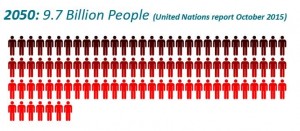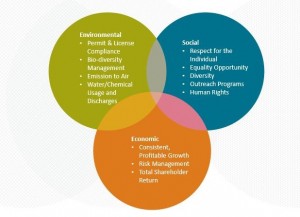This website uses cookies so that we can provide you with the best user experience possible. Cookie information is stored in your browser and performs functions such as recognising you when you return to our website and helping our team to understand which sections of the website you find most interesting and useful.
News
Moving to a More Sustainable Vinyl Future
What is sustainability?
Remove the green labels and the buzzword bingo approach, and sustainability is about the ways in which we can make it possible to live on Earth and feed, clothe, and shelter a growing number of people.
The population is growing. There are currently 7.4 billion people on the planet, and that number is expected to grow to 9.7 billion by 2050.

The United Nations says that farmers will need to produce 70 percent more food to feed the expanding population.
If nothing changes, we’ll need 3 planets.
“If we change nothing,” says Cristian Barcan, the Vinyl Institute’s vice president of sustainability, “we will need three planets of natural resources by 2050.”
Emerging pressing issues include natural resources, land management, clean water, food, climate change effects, and quality of life. These issues will impact all market segments, including agriculture, energy, transportation, building and construction, and water infrastructure.
Sustainability is in essence about producing more with less: better environmental and natural resources stewardship with economic sense and social due diligence. The sustainability roadmap demands a balanced approach and will require an iterative approach of continuous improvement, with established metrics and goals. Equally important, no market segment or business can go it alone. Collaboration is key.
There’s a balancing act.

Being more sustainable will require vinyl manufacturers and other businesses to develop an integrated approach to environmental, social and economic impact issues building upon the achievements of the past and present. Doing this right is hard, but it will lead to long term, sustainable profits.
The vinyl industry is already more sustainable today than in the past, thanks to a significant decrease in vinyl chloride emissions and a strong record of worker safety (with one-seventh the rate of accidents compared to all manufacturing). But there’s still more to do.
Five key business steps to an integrated approach to sustainability.
Moving toward an integrated approach will require the vinyl industry to take a hard look at everything it’s doing now and what tweaks and tough choices will allow manufacturers to do more with less. Then rise and repeat.
This approach includes a five-step process that can be embedded in a branded sustainability performance for the whole vinyl industry:
- Materiality study to get an overall snapshot of how the industry is doing in the environmental, social, and economic spheres and where it could do better. The aim is to identify the “hotspots” – the changes (e.g., emissions, wastewater use) you can put in place immediately to have the biggest immediate payback.
- Life-cycle assessment (LCA) to map the environment impact of a vinyl product from the raw materials to recycling and/or disposal.
- Addressing “hotspots,” creating a clear sustainability strategy and communicating with stakeholders (e.g., architects, designers, consumers) on the progress made to date.
- Establishing key performance indicators (KPIs) and goals for moving forward
- Reporting ongoing progress on achieving continuous improvement.
Future posts will hone in on this iterative process, including looking in more detail at what a materiality analysis involves, the questions to ask in identifying hotspots, and why you need a 360 study to both understand and validate your path forward.


